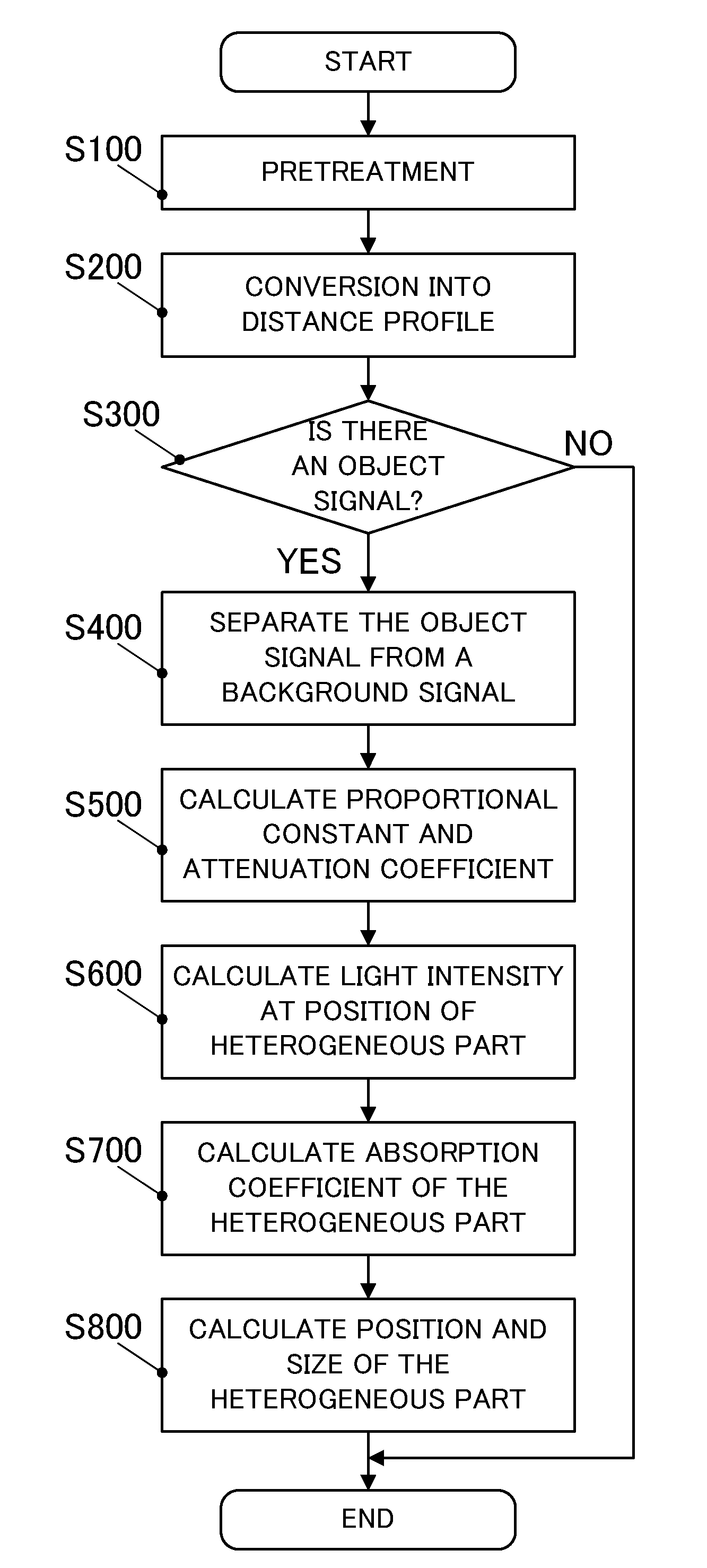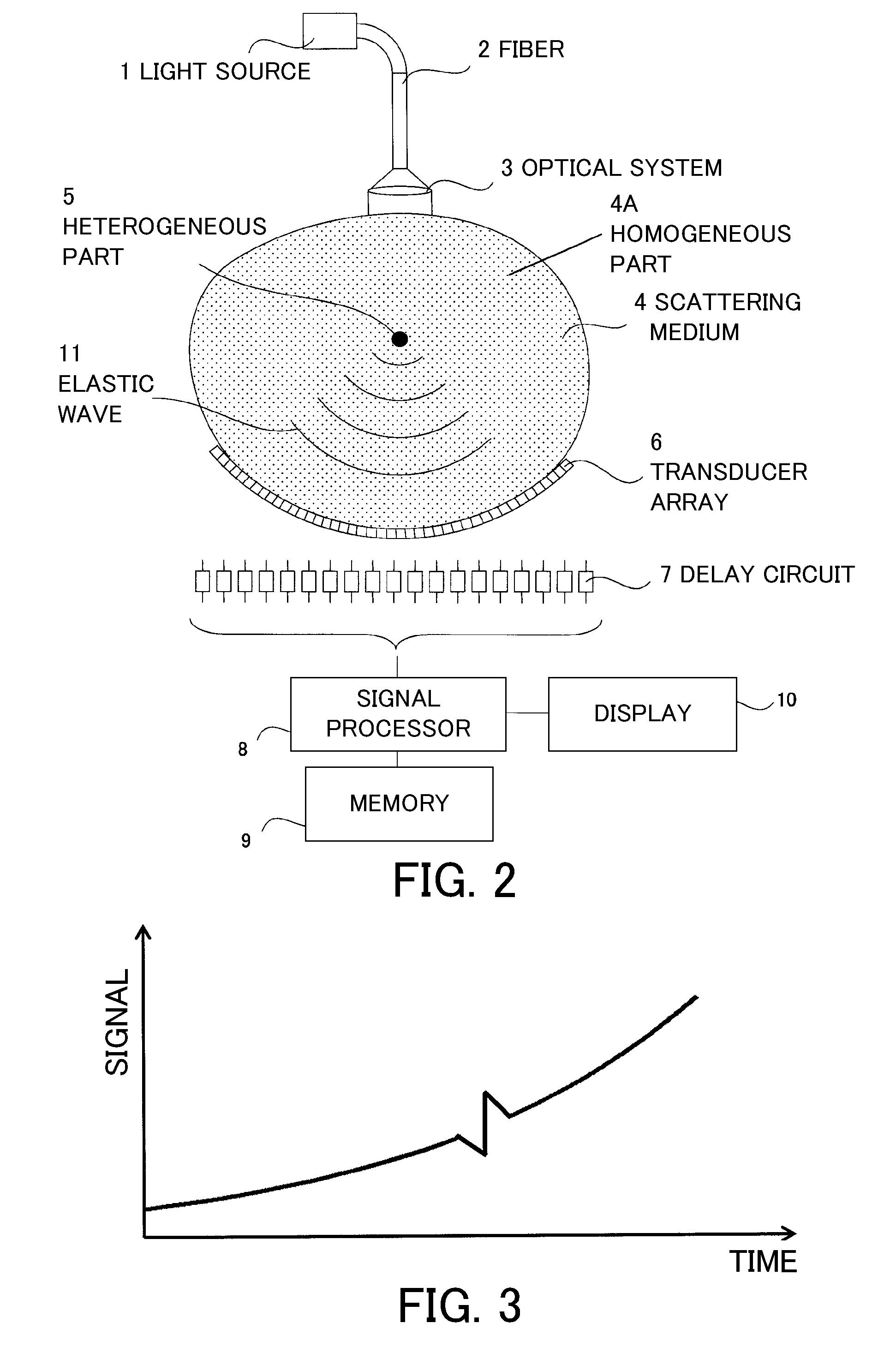Measurement apparatus
a technology of measuring apparatus and measuring rod, which is applied in the direction of counting objects on conveyors, applications, instruments, etc., can solve the problem that the absorbance characteristic cannot be precisely evaluated
- Summary
- Abstract
- Description
- Claims
- Application Information
AI Technical Summary
Benefits of technology
Problems solved by technology
Method used
Image
Examples
first embodiment
[0022]The first embodiment utilizes Equation 2 to calculate an attenuation coefficient of the background signal from a medium part (homogeneous part) in which an absorption characteristic and a scattering characteristic (which will be referred to as an “absorption-scattering characteristic” hereinafter) can be considered uniform in the scattering medium. Next, this embodiment utilizes the calculated attenuation coefficient and Equation 2 to calculate the light intensity at the position of a heterogeneous part that is an object of examination. Thereby, this embodiment can calculate the light intensity at an arbitrary position in the scattering medium, and measure the absorption coefficient (or absorption characteristic) of the object in accordance with Equation 1.
[0023]FIG. 2 is a block diagram of a measurement apparatus (such as an optical mammography unit) according to this embodiment. A light source 1 generates pulsed light having a wavelength in a near-infrared band, and irradiat...
second embodiment
[0039]A second embodiment uses the measurement apparatus shown in FIG. 2, basically utilizes the flow shown in FIG. 4, but differs from the first embodiment in S100, S500, or S600. FIG. 5 shows a flow showing details of the pretreatment of this embodiment (S100 shown in FIG. 4).
[0040]Initially, similar to the first embodiment, the signal processor 8 filters a noise signal through an averaging process (S110). The memory 9 previously stores an apparatus characteristic, such as a resonance frequency for each device of the transducer 6 and output fluctuation including an amplifier. Before the measurement, the apparatus characteristic that fluctuates in accordance with the measurement environment is provisionally measured and a correction value is calculated and stored in the memory 9.
[0041]Next, the signal processor 8 corrects the apparatus characteristic for each channel of the transducer array 6 for the obtained signal waveform (S120). For example, the correction, such as correcting t...
PUM
| Property | Measurement | Unit |
|---|---|---|
| attenuation coefficient | aaaaa | aaaaa |
| absorption coefficient | aaaaa | aaaaa |
| attenuation coefficients | aaaaa | aaaaa |
Abstract
Description
Claims
Application Information
 Login to View More
Login to View More - R&D
- Intellectual Property
- Life Sciences
- Materials
- Tech Scout
- Unparalleled Data Quality
- Higher Quality Content
- 60% Fewer Hallucinations
Browse by: Latest US Patents, China's latest patents, Technical Efficacy Thesaurus, Application Domain, Technology Topic, Popular Technical Reports.
© 2025 PatSnap. All rights reserved.Legal|Privacy policy|Modern Slavery Act Transparency Statement|Sitemap|About US| Contact US: help@patsnap.com



